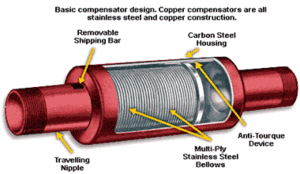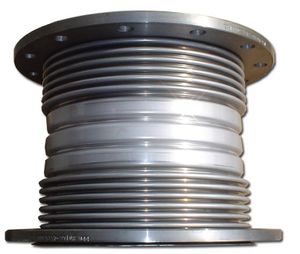Compensators
Compensators are necessary in systems that convey high temperature substances such as steam or exhaust gases, or to absorb movement and vibration. A typical joint is a bellows of metal (most commonly stainless steel), plastic (such as PTFE), fabric (such as glass fibre) or an elastomer such as rubber. A bellows is made up of a series of convolutions, with the shape of the convolution designed to withstand the internal pressures of the pipe, but flexible enough to accept axial, lateral, and angular deflections. Expansion joints are also designed for other criteria, such as noise absorption, anti-vibration, earthquake movement, and building settlement. Metal expansion joints have to be designed according to rules laid out by EJMA, for fabric expansion joints there are guidelines and a state-of-the-art description by the Quality Association for Fabric Expansion Joints.
Pipe expansion joints are also known as compensators, as they 'compensate' for the thermal movement.

